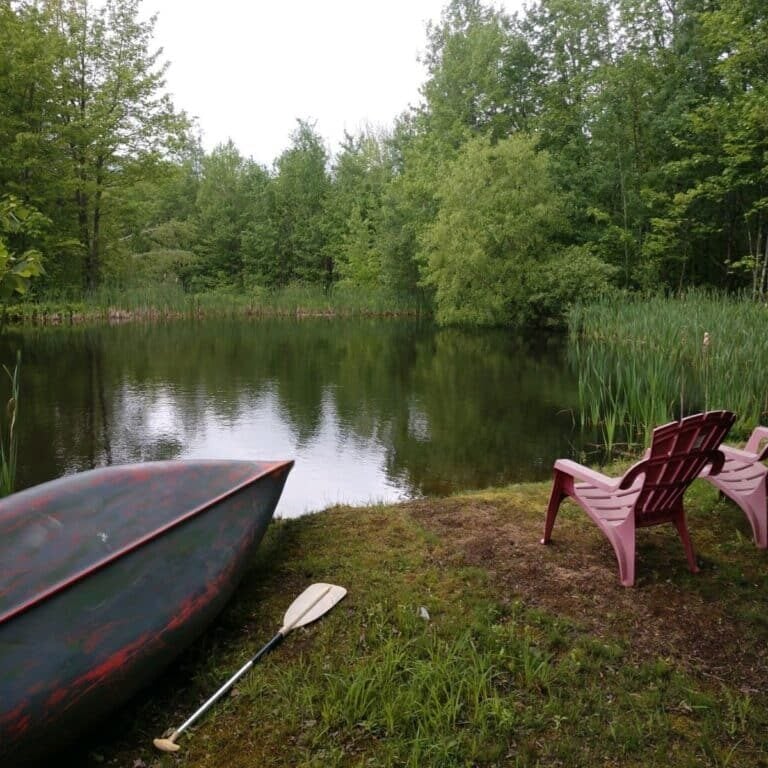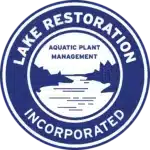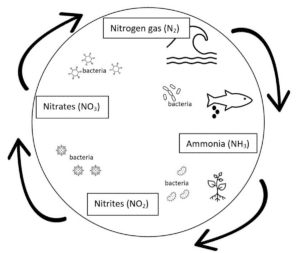
Nitrogen and Phosphorus in Ponds
Nitrogen and Phosphorus in Water
Nitrogen and phosphorus are essential nutrients for the life of many organisms. Plants, animals, and humans need nitrogen; plants, animals, and microorganisms need phosphorus. Plants in the water absorb these nutrients through the water and the soil. More available nutrients foster more plant growth. Managing the nutrients in your water (nutrient load management) is an important effort for maintaining healthy aquatic plant and algae growth. This article will describe the nitrogen cycle in a pond and how to reduce phosphorus in water as well as nitrogen.
The Nitrogen Cycle in Water
About 78% of the air we breathe is made up of nitrogen in the form of N2. Humans cannot use this form of nitrogen; we consume nitrogen in a different form through the foods we eat. Aquatic plants absorb nitrogen directly through the water in the form of nitrates (NO3-). The water nitrogen cycle involves changing nitrogen into different forms.
Pond Nitrogen Cycle
There are four phases in the nitrogen cycle in a water ecosystem.
- When nitrogen is absorbed into the water, there are nitrogen-fixing bacteria that take the N2 and turn it into ammonia, NH3, which is also a by-product of fish waste and other organic matter.
- Ammonia (NH3) is used by plants; plants are eaten by fish, animals, and humans (think vegetables) and the nitrogen gets into people’s systems that way.
- There are other bacteria that turn the ammonia into nitrites, NO2 (which are bad for people).
- Then different bacteria change those nitrites into nitrates, (NO3- ).
- Another type of bacteria can transform the nitrogen back to its original state as a gas and then it is released into the atmosphere once again. See the diagram.
How Does Phosphorus Get into Water?
Phosphorus occurs naturally all over the world and often attaches itself to soil particles. Soil and bank erosion bring phosphorus into streams, lakes, and rivers. Even slight increases in phosphorus levels in the water can have substantial effects because phosphorus is present in such small amounts naturally. It is one of the main nutrients needed for plant and algae growth; one pound of phosphorus can support the growth of 500 pounds of algae. As phosphorus levels increase in the water, algae growth increases. Runoff from fields and yards brings nutrients such as phosphorus and nitrogen into the water, adding fuel for more algae and plant growth.
How to Remove Nitrogen and Phosphorus from Water
Remove nitrogen with the use of beneficial bacteria; remove phosphorus from a pond by adding a phosphate binder. Reducing the amount of available nutrients limits weed and algae growth.
How to Reduce Nitrogen in Pond
Adding beneficial bacteria to your water regularly throughout the growing season will continue the process of changing nitrogen in water back to a gas that floats up into the air. SparKlear comes in pellets that are broadcast or liquid that is diluted and sprayed. Adding these fresh bacteria every two to four weeks clarifies water and limits one of the main nutrients needed for plant and algae growth.
Limit Phosphorus in Ponds
Limit the addition of phosphorus into water by not fertilizing close to the pond or lake; fertilizers contain phosphorus to encourage plant growth. Maintain buffer plants at the water’s edge to filter the runoff. Depending on your location, some native plants to filter runoff may be arrowhead, water plantain, bulrushes, sweet flag, or pickerelweed. Limiting the main nutrients needed to grow will hinder future weed and algae growth.
Besides limiting how much phosphorus goes into the water, it is possible to remove phosphorus from the water. Lowering phosphorus is a proactive effort for algae and aquatic plant management. Apply PhosControl twice per year, spring and fall, when plants are dormant. PhosControl bonds with excess phosphorus in water, making it unavailable to future plant and algae growth.
Conclusion
While nitrogen and phosphorus are necessary for the life of plants and animals, these nutrients contribute to nuisance algae and plant growth. Lowering the amount of nitrogen and phosphorus in the water limits this nuisance growth. In turn, fewer plants and algae keep the water clear for fish and other aquatic life, promoting a healthy ecosystem.

